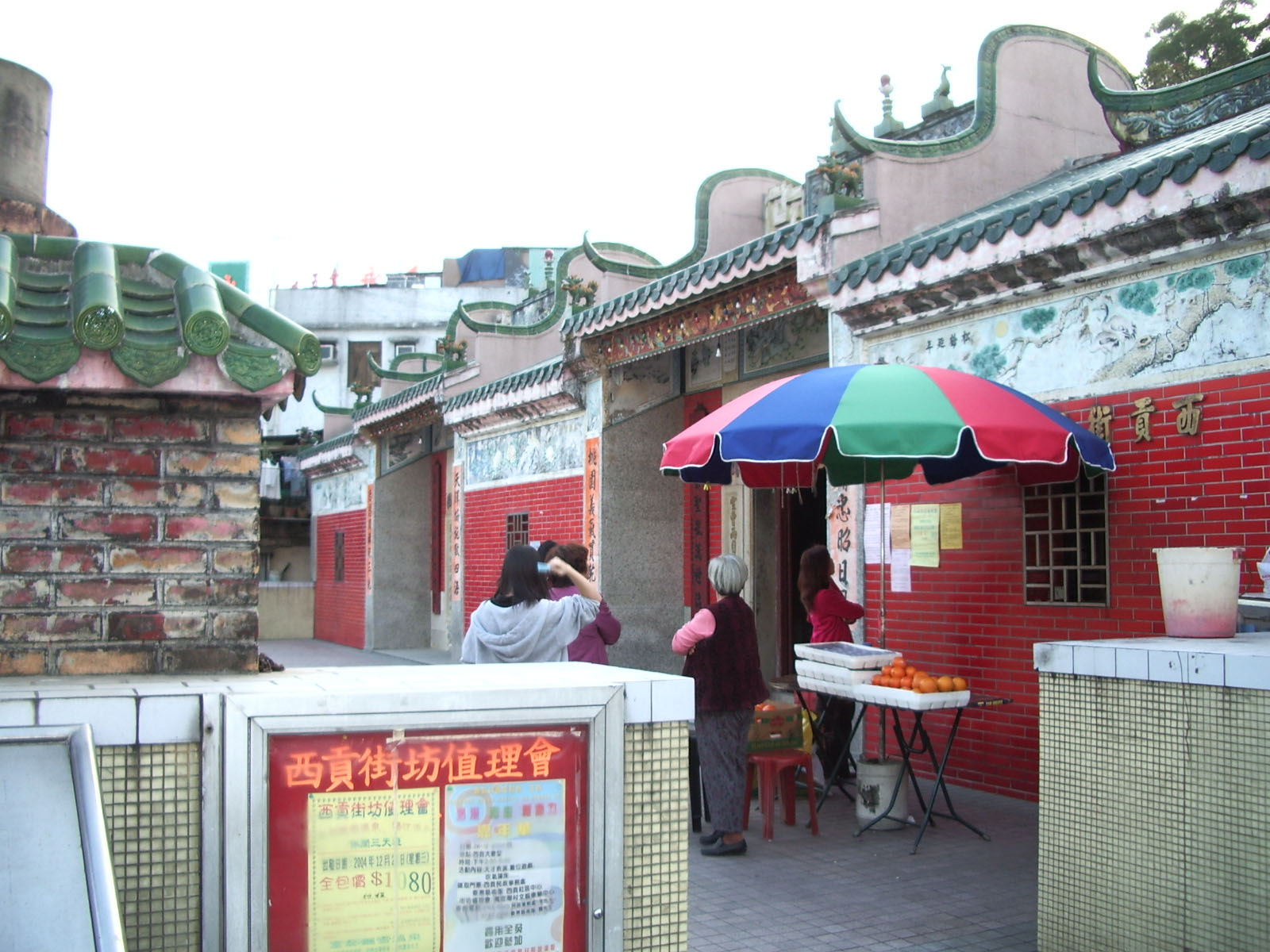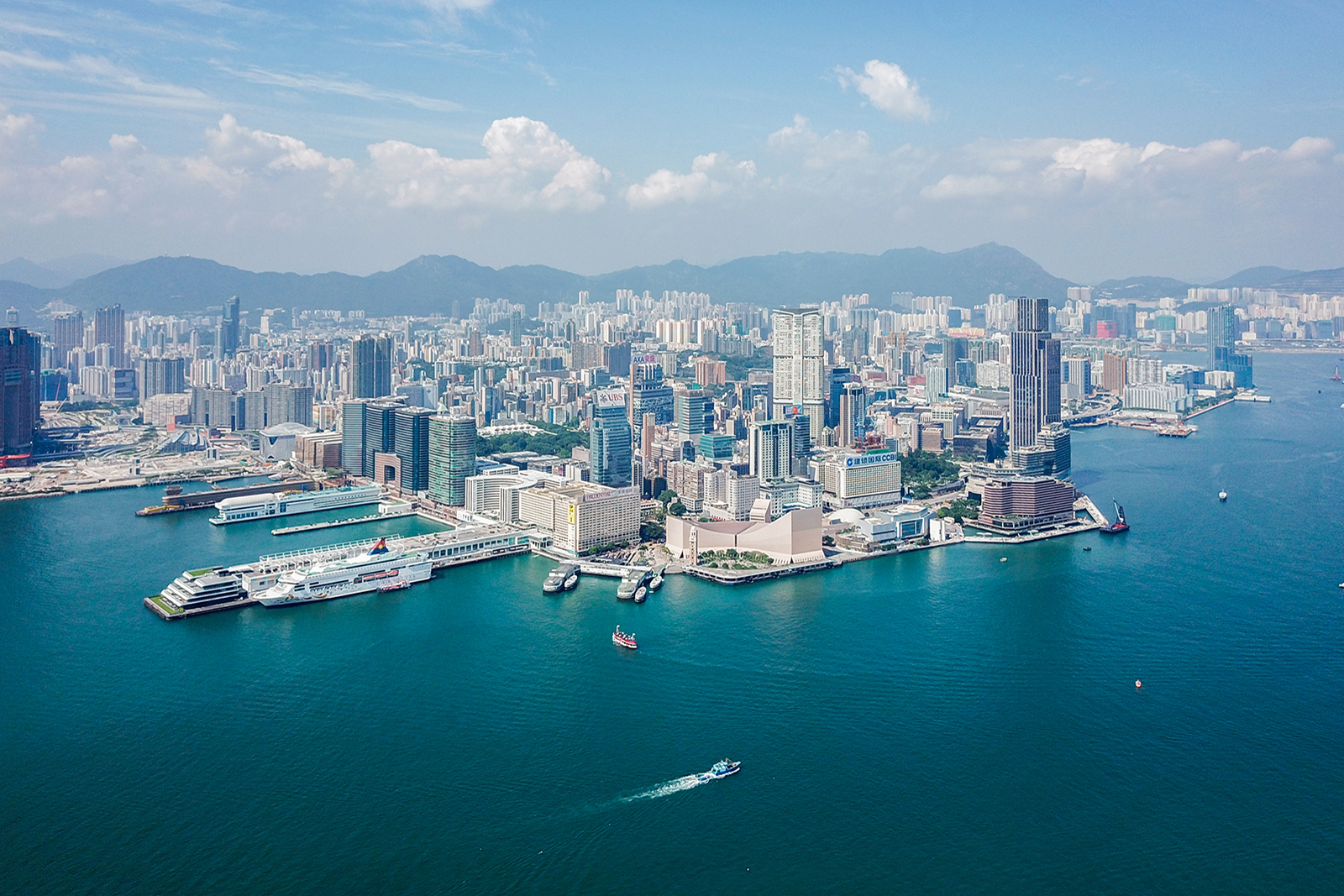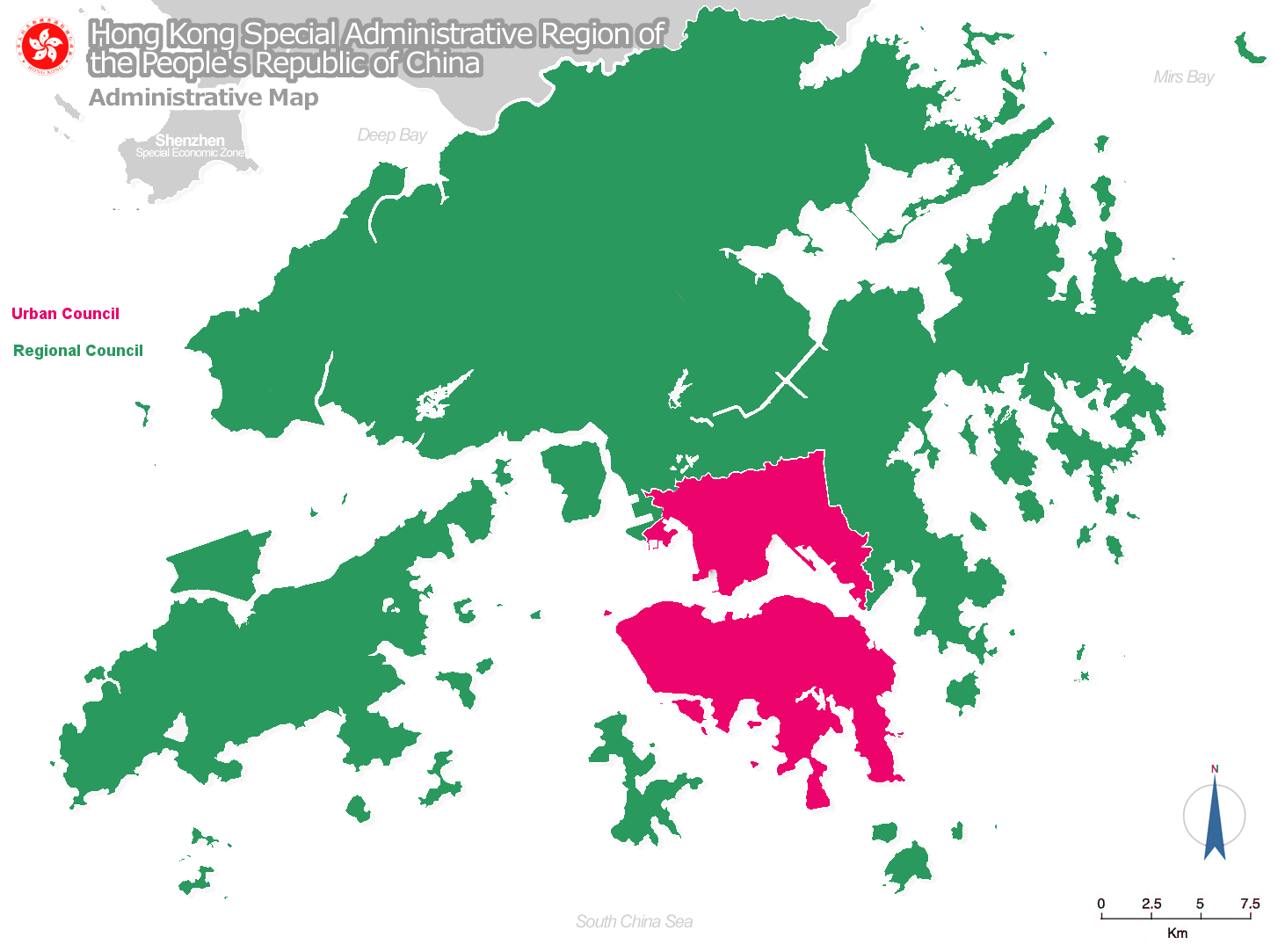|
Gallant Garden
Gallant Garden (), in Wo Hop Shek Public Cemetery at Wo Hop Shek, Hong Kong, was established in November 1996 for civil servants who lost their lives on duty. In 2000, permanent earth burial was extended to both civil servants and non-civil servants who died with exceptional bravery while on duty. It has an area of 1,600 m2 (17,200 ft²) and is currently maintained by Food and Environmental Hygiene Department. It has 110 land burial spaces, 165 urn spaces, and a columbarium of 120 niches. There is also a large Buddhist-Taoist monastery built near the cemetery. The majority of those interred are police officers and firefighters fallen on duties, but several medical personnel who contracted and died from SARS while treating sufferers from the disease are also buried in the cemetery. Interments at Gallant Garden # 1983 關耀煇 (died at 27): Royal Hong Kong Police Force traffic police officer killed in a traffic accident while on duty # 1987 陳潤良 (died at 30): Hong Kong Fi ... [...More Info...] [...Related Items...] OR: [Wikipedia] [Google] [Baidu] |
Hong Kong
Hong Kong ( (US) or (UK); , ), officially the Hong Kong Special Administrative Region of the People's Republic of China ( abbr. Hong Kong SAR or HKSAR), is a city and special administrative region of China on the eastern Pearl River Delta in South China. With 7.5 million residents of various nationalities in a territory, Hong Kong is one of the most densely populated places in the world. Hong Kong is also a major global financial centre and one of the most developed cities in the world. Hong Kong was established as a colony of the British Empire after the Qing Empire ceded Hong Kong Island from Xin'an County at the end of the First Opium War in 1841 then again in 1842.. The colony expanded to the Kowloon Peninsula in 1860 after the Second Opium War and was further extended when Britain obtained a 99-year lease of the New Territories in 1898... British Hong Kong was occupied by Imperial Japan from 1941 to 1945 during World War II; British administration resume ... [...More Info...] [...Related Items...] OR: [Wikipedia] [Google] [Baidu] |
Lok Ma Chau
Lok Ma Chau or Lokmachau is an area in Hong Kong's New Territories. It is the site of a major pedestrian (linked directly to the Hong Kong rapid transit network) and road border crossing point between Hong Kong and mainland China. Administratively, most of the Lok Ma Chau area is located within the Yuen Long District of Hong Kong. Geography Lok Ma Chau lies just south of the Sham Chun River (or Shenzhen River in Mandarin), which forms the border between Hong Kong and mainland China. Lok Ma Chau lies opposite Huanggang in Shenzhen, China. Lok Ma Chau lies within Hong Kong's Frontier Closed Area, a buffer zone established by the Hong Kong government to prevent illegal immigration from mainland China, and access to the area is restricted to those holding Closed Area Permits. Those who are crossing the border to or from China do not need permits but must leave the area immediately after completing immigration procedures. To the southwest of Lok Ma Chau is the Mai Po Wetlands. ... [...More Info...] [...Related Items...] OR: [Wikipedia] [Google] [Baidu] |
Tuen Mun Hospital
Tuen Mun Hospital is a public hospital, with a 24-hour Emergency department, accident and emergency department, in Tuen Mun, New Territories, Hong Kong. Its construction began in 1979, and it was inaugurated on 8 March 1990. It is governed by the Hospital Authority, and is designated under New Territories West Cluster. History Tuen Mun Hospital was designed by the Architectural Services Department. It was constructed by Aoki Corporation, a Japanese civil engineering and Construction management, construction services firm. The hospital was Topping out, topped out in a ceremony hosted by Sir David Akers-Jones on 28 August 1986, at which time it was the largest hospital under construction in the world. The hospital commenced services on 8 March 1990 and cost HK$1.2 billion. The Emergency department, accident and emergency department opened on 30 July that year. Management Hospital Governing Committee This is a list of the current and former chairmen of the committee: *Will ... [...More Info...] [...Related Items...] OR: [Wikipedia] [Google] [Baidu] |
SARS
Severe acute respiratory syndrome (SARS) is a viral respiratory disease of zoonotic origin caused by the severe acute respiratory syndrome coronavirus (SARS-CoV or SARS-CoV-1), the first identified strain of the SARS coronavirus species, ''severe acute respiratory syndrome–related coronavirus'' (SARSr-CoV). The first known cases occurred in November 2002, and the syndrome caused the 2002–2004 SARS outbreak. In the 2010s, Chinese scientists traced the virus through the intermediary of Asian palm civets to cave-dwelling horseshoe bats in Xiyang Yi Ethnic Township, Yunnan.The locality was referred to be "a cave in Kunming" in earlier sources because the Xiyang Yi Ethnic Township is administratively part of Kunming, though 70 km apart. Xiyang was identified on * For an earlier interview of the researchers about the locality of the caves, see: SARS was a relatively rare disease; at the end of the epidemic in June 2003, the incidence was 8,469 cases with a case fatality rate (CFR ... [...More Info...] [...Related Items...] OR: [Wikipedia] [Google] [Baidu] |
Sai Kung District
Sai Kung District is one of the 18 districts of Hong Kong, a special administrative region of China. The district comprises the southern half of the Sai Kung Peninsula, the Clear Water Bay Peninsula in the New Territories and a strip of land to the east of Kowloon. Areas in the district include Sai Kung Town, Hong Kong UNESCO Global Geopark, Tseung Kwan O and over 70 islands of different sizes. The administrative centre had been located in Sai Kung Town until the Sai Kung District Office was relocated to Tseung Kwan O recently. The district's population is concentrated in Tseung Kwan O, as of 2011. In 2011, the district was the third youngest district, with a median age of 39.3. Known as the "back garden of Hong Kong", Sai Kung has been able to retain its natural scenery. Many traditional customs and cultures are still retained in the rural villages. History The modern geopolitical entity of Sai Kung District was formed after World War II. Settlements existed in the area p ... [...More Info...] [...Related Items...] OR: [Wikipedia] [Google] [Baidu] |
Tsim Sha Tsui
Tsim Sha Tsui, often abbreviated as TST, is an list of areas of Hong Kong, urban area in southern Kowloon, Hong Kong. The area is administratively part of the Yau Tsim Mong District. Tsim Sha Tsui East is a piece of land reclaimed from the Hung Hom Bay now east of Tsim Sha Tsui. The area is bounded north by Austin Road and in the east by Hong Chong Road and Cheong Wan Road. Geographically, Tsim Sha Tsui is a cape (geography), cape on the tip of the Kowloon Peninsula pointing towards Victoria Harbour, opposite Central, Hong Kong, Central. Several villages had been established in this location before Kowloon Convention of Peking, was ceded to the British Empire in 1860. The name ''Tsim Sha Tsui'' in Cantonese language, Cantonese means ''sharp spit (landform), sandspit''. It was also known as Heung Po Tau (), i.e. a port for exporting Aquilaria sinensis, incense tree. Tsim Sha Tsui is a Tourism in Hong Kong, major tourist hub in Hong Kong, with many high-end shops, bars, pubs an ... [...More Info...] [...Related Items...] OR: [Wikipedia] [Google] [Baidu] |
Tsuen Wan
Tsuen Wan (formerly also spelled Tsun Wan) is a town built on a bay in the western New Territories of Hong Kong, opposite of Tsing Yi Island across Rambler Channel. The market town of Tsuen Wan emerged from the surrounding villages and fleets of fishing boats in the area. The now-crowded city is around the present-day Tsuen Wan station of the MTR. Its coastline was further extended through land reclamation. History According to the report of Hong Kong archaeological society, there were people settled in Tsuen Wan as early as two thousand years ago. In earlier days, it was known as Tsin Wan (淺灣) which means shallow bay, and later renamed to Tsuen Wan. Another name ''Tsak Wan'' (賊灣, Hakka dialect pronunciation: tshet wan), pirate bay, indicates the presence of pirates nearby long ago. In fact, the area around Rambler Channel was known as Sam Pak Tsin (三百錢), literally meaning three hundred coins. There was a legend that pirates would collect three hundre ... [...More Info...] [...Related Items...] OR: [Wikipedia] [Google] [Baidu] |
Tsui Po-ko
Tsui Po-ko () (17 May 1970 – 17 March 2006) was a Police Constable of the Hong Kong Police Force,bank robber and serial killer. He is one of Hong Kong's most known three serial killers, with Lam Kor-wan and Lam Kwok-wai being the others. He was killed during an ambush on two Police Constables in a Jordan subway which led to a shootout. The inquest into the events leading up to his death aroused great interest in Hong Kong, as it unravelled a string of intriguing events, and revealed the secret life of a policeman with a delusional state of mind. On 25 April 2007, the five-person jury in the coroner's court unanimously decided that Tsui was responsible for injuring one and killing two fellow police officers and a bank security guard, on three separate occasions. The jury returned a verdict that he had been "lawfully killed" by fellow officer Tsang Kwok-hang in a shootout. The inquest lasted 36 days, one of the longest ever inquests in Hong Kong. Assistant Police Commissi ... [...More Info...] [...Related Items...] OR: [Wikipedia] [Google] [Baidu] |
Immigration Tower
Immigration Tower is a skyscraper located in the Wan Chai District of Hong Kong completed in 1990. The tower rises 49 floors and in height. Immigration Tower, which stands as the 93rd-tallest building in Hong Kong, is composed entirely of office space. The building houses government offices, principally those of the Immigration Department. Design Immigration Tower is part of a three-tower complex of government offices surrounding the Gloucester Road Garden. The other two towers are the Wanchai Tower and the Revenue Tower. These government buildings were designed by the Architectural Services Department for the Government Property Agency. The Revenue Tower is nearly identical in design to the Immigration Tower. Most of the floors in the Immigration Tower are designed as open plan offices, which increases flexibility for tenants. For these floors, the usable floor area is as much as 80% of the gross floor area. The tower incorporates a sky lobby on the 38th storey to facili ... [...More Info...] [...Related Items...] OR: [Wikipedia] [Google] [Baidu] |
Immigration Department (Hong Kong)
The Immigration Department of the Government of Hong Kong is responsible for immigration control of Hong Kong. After the People's Republic of China assumed sovereignty of the territory in July 1997, Hong Kong's immigration system remained largely unchanged from its British predecessor model. Residents from mainland China do not have the right of abode in Hong Kong, nor can they enter the territory freely, both before and after 1997. There are different regulations that apply to residents of Macau, another Special Administrative Region of China. In addition, visa-free entry acceptance regulations into Hong Kong for passport holders of some 170 countries remain unchanged before and after 1997. In a special arrangement, although Hong Kong's residents of Chinese descent are defined as citizens of the People's Republic of China, as stipulated by the Basic Law, Hong Kong's Immigration Department is responsible for issuing Hong Kong SAR passports for Hong Kong residents who are al ... [...More Info...] [...Related Items...] OR: [Wikipedia] [Google] [Baidu] |
Regional Council (Hong Kong)
The Regional Council (RegCo; ) was a municipal council in Hong Kong responsible for municipal services in the New Territories (excluding New Kowloon). Its services were provided by the Regional Services Department, the executive arm of the Regional Council. Its headquarters were located near Sha Tin station. History Technically, only Hong Kong Island, Kowloon, and New Kowloon were within the purview of the Urban Council. But the Urban Services Department, the executive arm of the Urban Council, began servicing the New Territories with its establishment in 1953. Following public consultation, a Provisional Regional Council was established on 1 April 1985 under the auspices of the colonial Hong Kong Government, to provide for the New Territories what the Urban Council did for Hong Kong Island, New Kowloon and Kowloon. Like the Urban Council, the Regional Council was created in 1986 as an elected body comprising representatives from constituencies and district boards. In 198 ... [...More Info...] [...Related Items...] OR: [Wikipedia] [Google] [Baidu] |






